This eight-move standing abs workout builds a seriously strong core without sit-ups
Tone and strengthen your abs with these simple Pilates-inspired exercises.
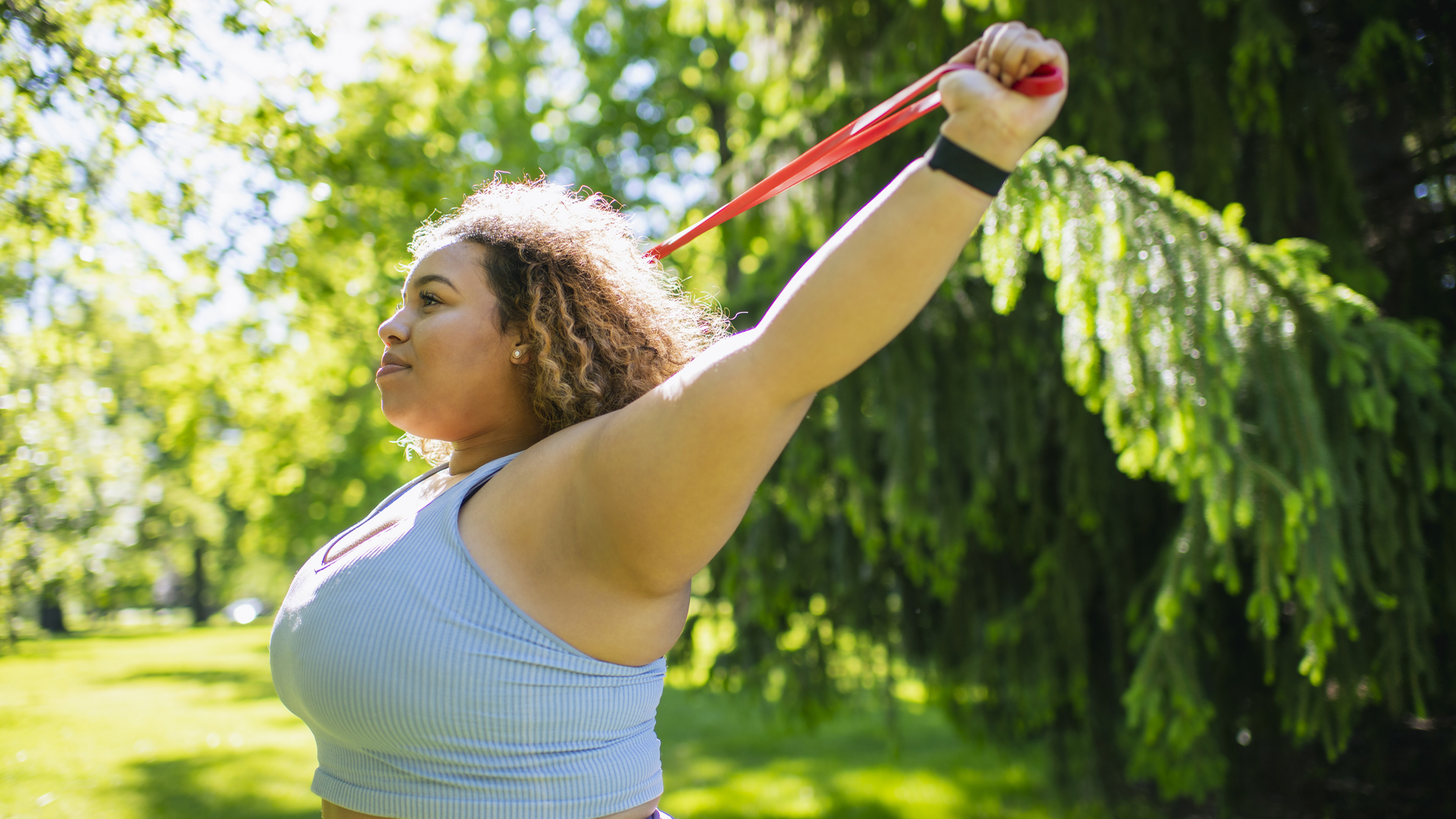
It's rare to find an ab workout you actually enjoy. Endless sets of crunches, sit-ups or planks can be repetitive and boring, while the afterburn often leaves you wincing every time you move or laugh for days afterwards.
Thankfully, you don’t have to do traditional lying ab exercises to strengthen your core. Physiotherapist Helen O’Leary, director of Complete Pilates, has created a standing abs workout you can do at home to develop and maintain core strength. All you need is one of the best resistance bands and a spare 30 minutes.
Core workouts are certainly worthy of your time too, capable of improving both your fitness and overall health. A 2021 review of studies, published in the Orthopedic Online Research Journal, found core strength improves balance and quality of life in older adults, which can prevent injuries and help with recovery from exercise.
So, read on to find out how to build a strong midline without hitting the exercise mat, then give this eight-move session a go.
Alllvocles Resistance Bands Set | Was: $29.99 | Now: $19.99 on Amazon
Currently 33% cheaper than usual, these resistance bands are ideal for home workouts like the one below. The set can easily be packed into a kit bag for on-the-go training, and it comes with four bands of varying resistance levels, so there's something to suit all exercisers.
Standing abs workout
Each of these eight exercises will be performed as part of a superset. This means the movements are coupled together as four sets of pairs, with the two exercises completed back-to-back with no rest. Repeat each superset three times, and rest for 30 seconds between them.
1a. Standing banded hip flexion
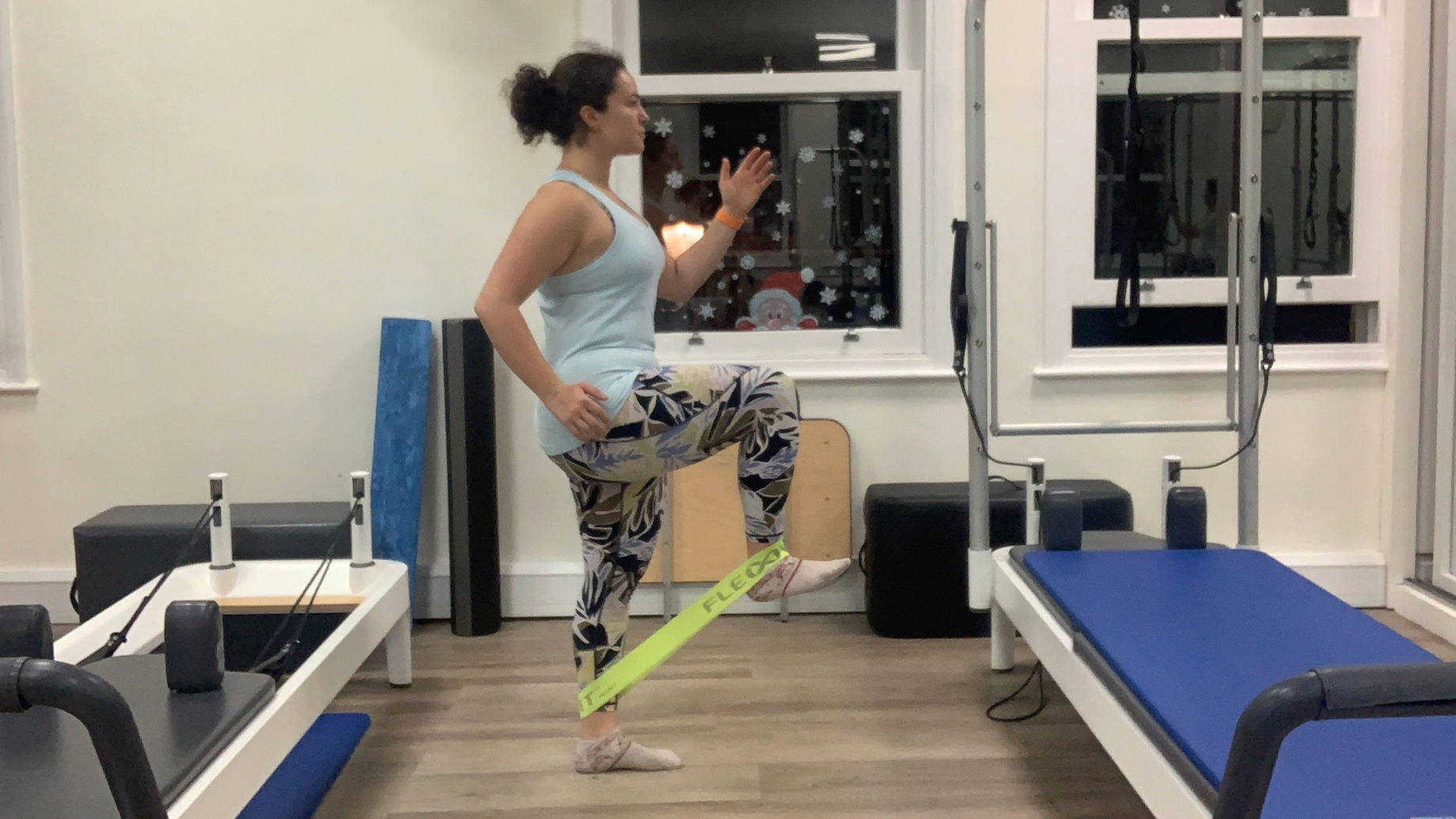
Sets: 3 Reps: 8 - 12
- Place a mini band around your feet so it 's secured under your soles.
- Stand with your feet hip-width apart.
- Maintain an upright position as you slowly pull the band up towards you with one foot.
- Keep your foot flexed (pulling up towards the shin) to maintain tension on the band and the bend in your ankle.
- This exercises uses your hip flexors, transverse abdominis and oblique muscles. Try to stay upright as you do it maximize core engagement.
1b. Squat
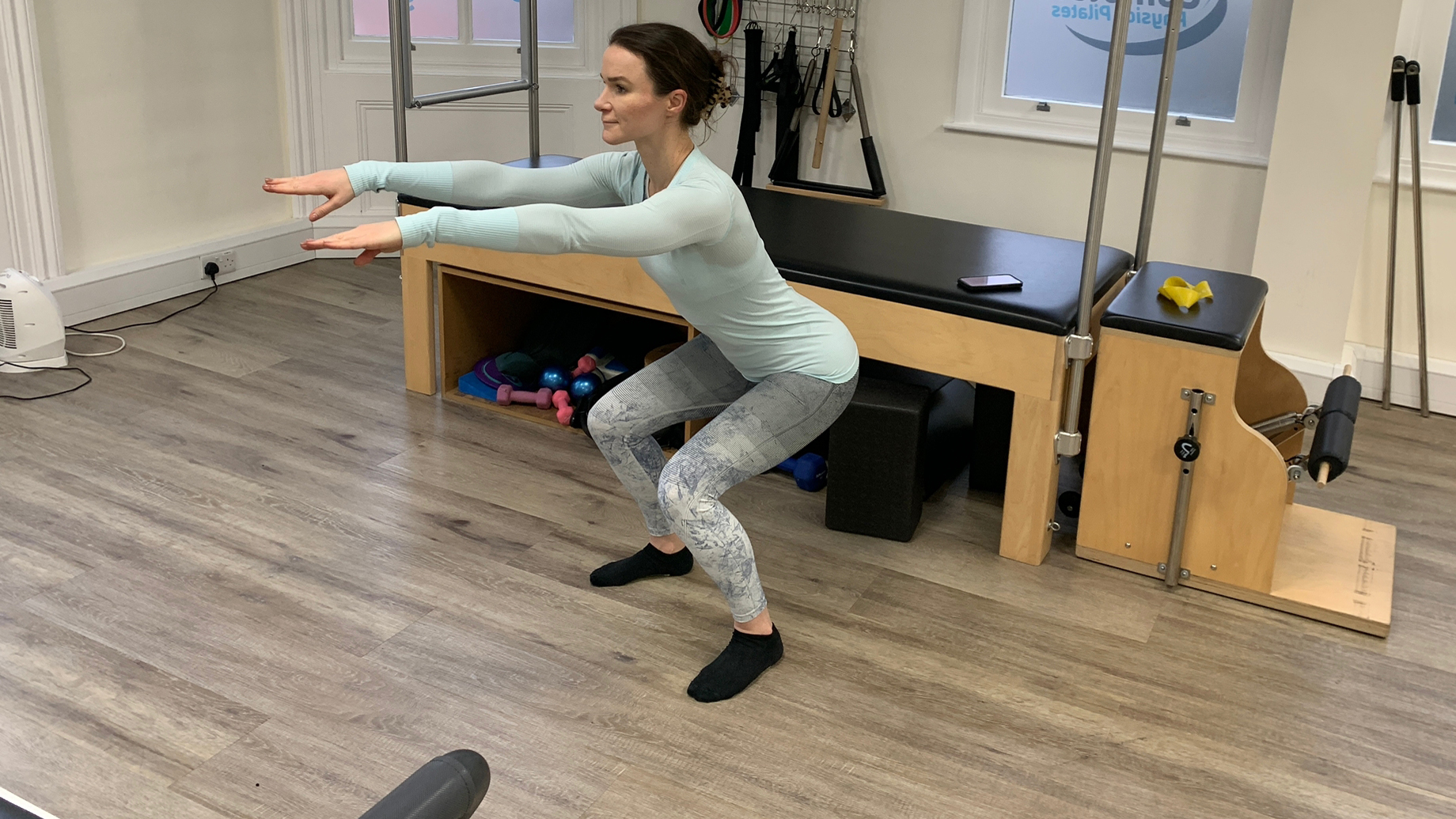
Sets: 3 Reps: 15
Get the Fit&Well Newsletter
Start your week with achievable workout ideas, health tips and wellbeing advice in your inbox.
- You might think squats are a leg exercise, but they also engage your abs.
- Stand with your feet hip-width apart. You can widen the stance and turn the toes and knees out if this feels more comfortable.
- Sit back as if you were sitting onto a chair, leading with the bottom first.
- Bring your arms up in front of you to counterbalance your weight.
- As you stand back up, think about pressing the whole of the foot away into the floor.
2a. Wood chop
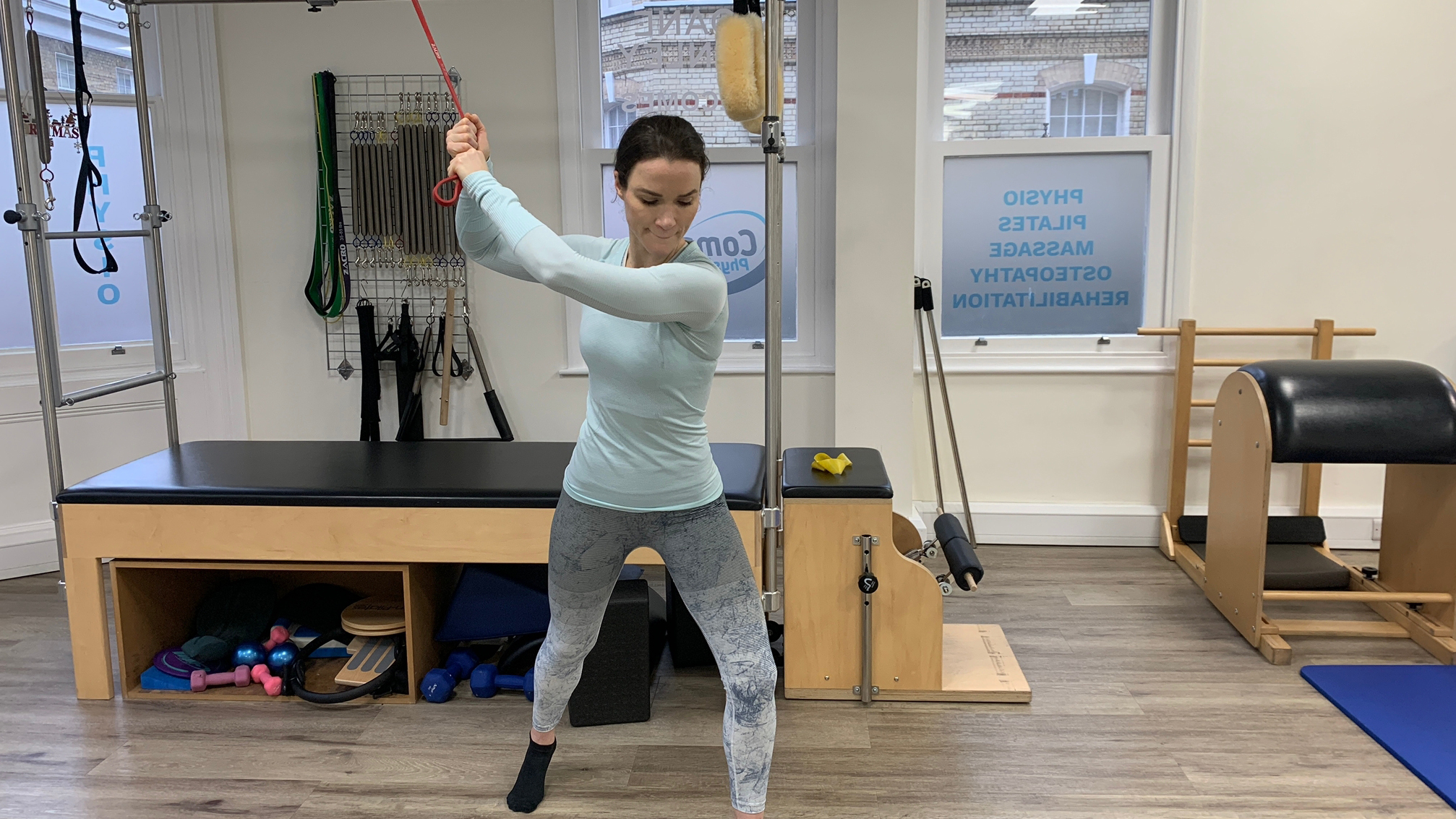
Sets: 3 Reps: 8 - 12
- Stand with your feet hip-width apart.
- Secure a resistance band up high, ideally somewhere that is above shoulder-height and slightly behind you so you can just see it when looking over your shoulder.
- Grab the band with both hands.
- Pull the band across you in a diagonal motion towards your opposite foot, bending the knees slightly as you go and pivoting on the back foot slightly.
- The movement should mimic the action of chopping wood – as the name suggests.
- This is a great one for your obliques, but will also recruit your shoulder, hip and thigh muscles.
- Make sure to start the movement with your abs rather than bending your elbows and pulling with your arms.
2b. Palof press
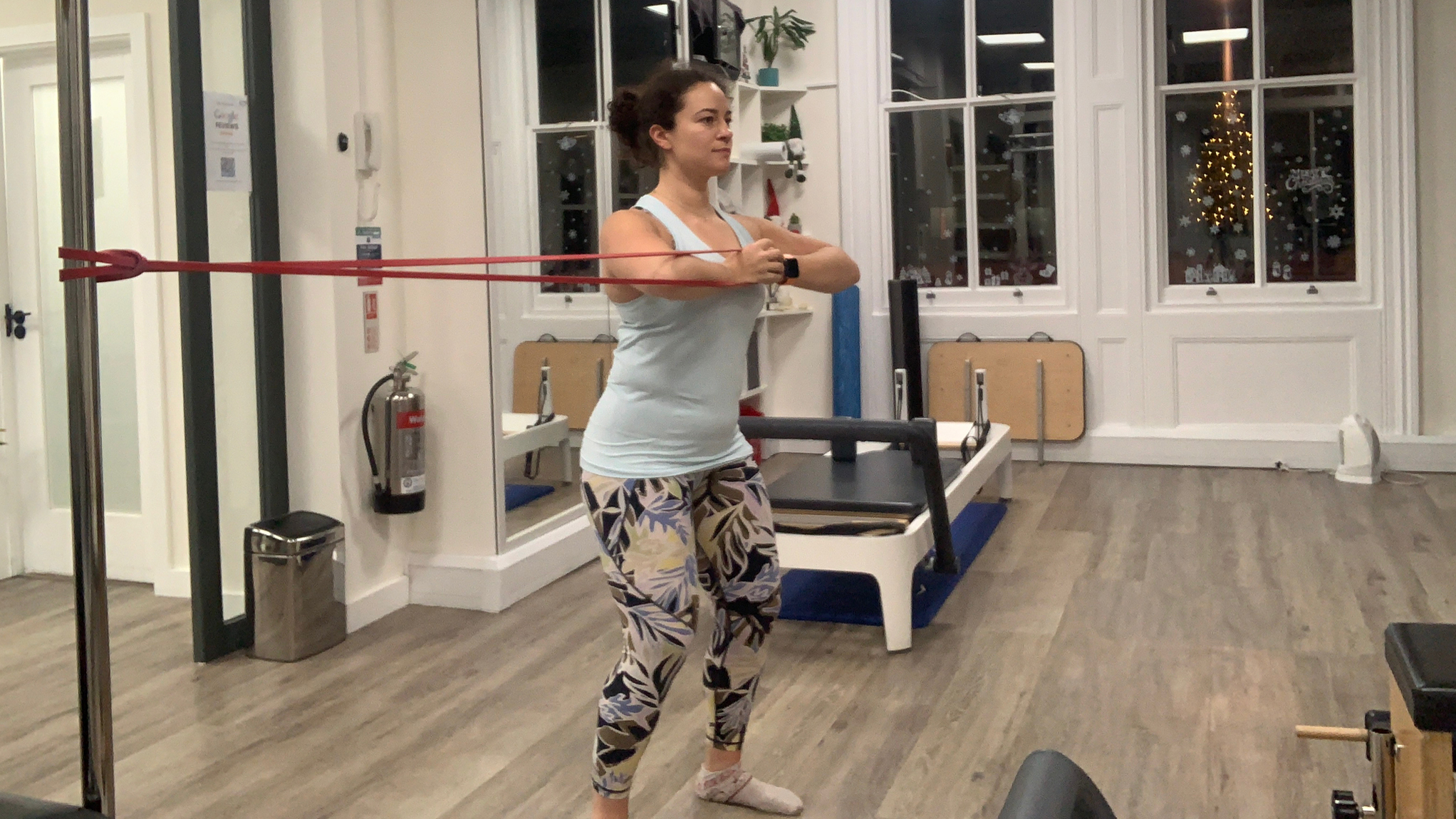
Sets: 3 Duration: 30 secs
- There are several variations of the Palof press you can do, but the classic version involves standing with your feet hip-width apart or slightly wider if you need more stability.
- Have a strong resistance band secured to something sturdy at the side of you (like a bannister or a squat rack) at around chest height.
- Hold the resistance band in both hands close to your chest.
- Step away from where the band is tied until there is a good amount of tension in the band.
- Press and extend your arms in front of you. As you do this it will create a longer lever and you will feel it become harder to stop the band pulling you to the side.
- Pause with your arms out straight and then slowly bring your hands back towards your chest. You are aiming to control the rotation.
- In this exercise you have to use your core muscles to stabilize you. For an added challenge, try the exercise standing on one leg.
3a. Standing shoulder extensions
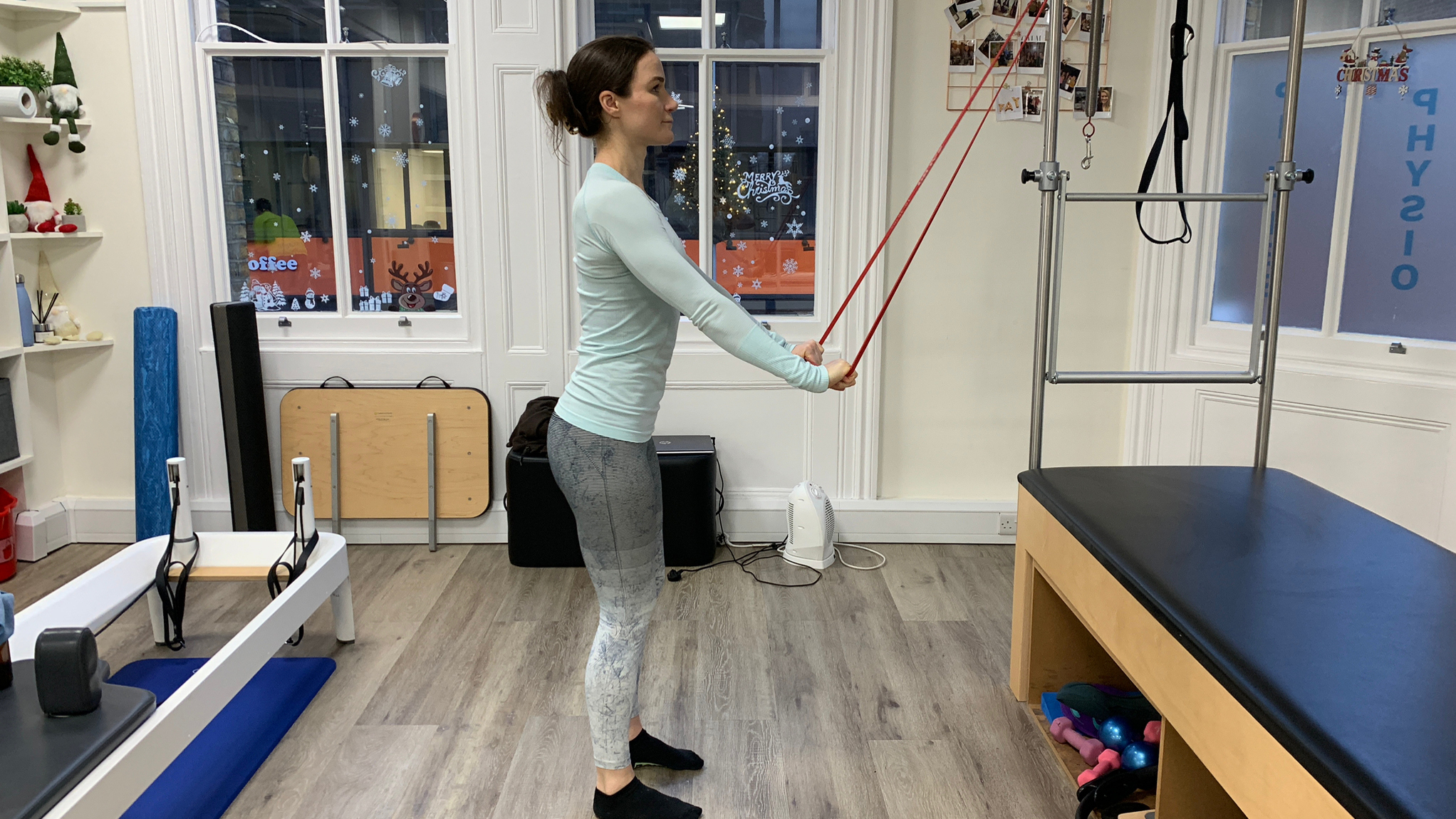
Sets: 3 Reps: 15
- Secure a resistance band to a sturdy surface slightly above your head height.
- Grip the band in front of you with one hand so it's level with your pelvis.
- Keeping your arm straight, press down into the band and move it towards (then past) your hips. Your hand should finish slightly behind you, with the band under tension.
- Return to the starting position, keeping your movements slow and controlled throughout.
- Perform 15 reps, then repeat with the other arm.
3b. Standing wall press up

Sets: 3 Reps: 8 - 12
- Place your hands on a wall shoulder-width apart with your hands facing slightly inwards.
- Bend your arms to bring your chest towards the wall.
- Push against the wall to move away and straighten your arms again.
- During a wall press up, you are essentially holding a plank position. Many people make the mistake of letting their lower back sag, but we want to stop this by keeping our core engaged throughout.
- To hold a strong plank position, imagine pulling your front ribs towards your pelvis.
4a. Banded rotation
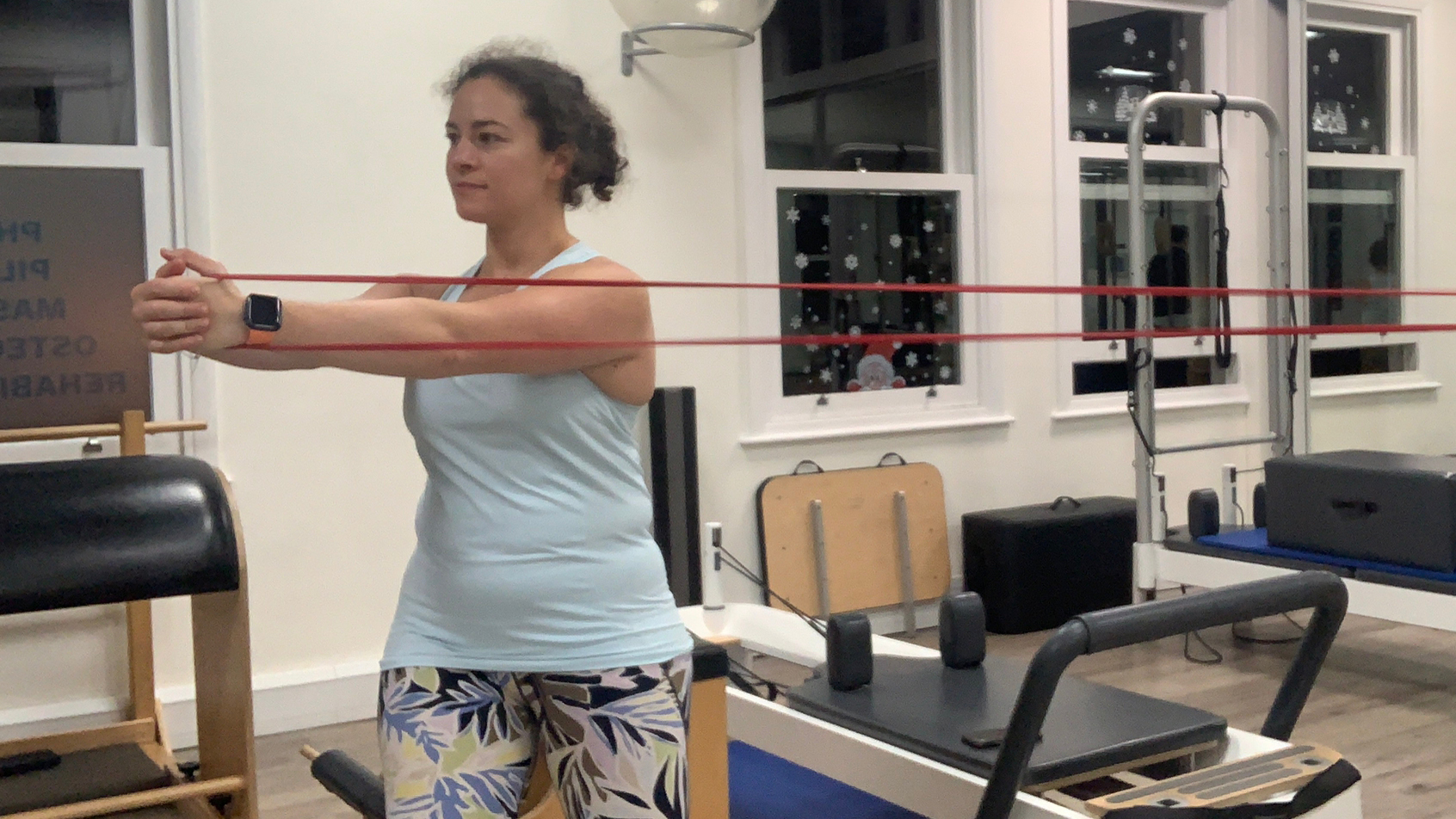
Sets: 3 Repetitions: 8 - 12
- Start with your feet hip-width apart and your knees slightly bent.
- Have a strong resistance band secured to the side of you, with some tension in the band.
- Holding the band, extend your arms in front of you.
- Slowly twist from the waist to pull the band to the opposite side to which it is secured, trying to keep your hips still.
- Slowly return to your midline. This exercise uses your oblique muscles to produce the rotational movement.
4b. Dumbbell side raises

Sets: 3 Reps: 8 - 12
- Stand with your feet hip-width apart.
- Hold a dumbbell on one side – or you can secure a resistance band under your foot.
- Place your other hand on your head.
- Bend to one side to lower the dumbbell towards your knee, then slowly lift up again, controlling the movement throughout.
- You need to use enough resistance so that you can feel the side of your body working. The working muscles should feel fatigued towards the end of your set. .

Helen O’Leary is a chartered physiotherapist, Pilates instructor and director of Complete Pilates in London, England. Helen graduated from the University of Birmingham in 2008 and completed a Polestar Pilates Rehabilitation course in 2010. She started her career as a physiotherapist in professional men’s rugby and with Cirque du Soleil before launching Complete Pilates. After 13 years of dealing with acute trauma injuries as a physiotherapist, Helen now works with clients before and immediately after surgery to optimize their recovery.
All of these movements will engage different parts of the body, as well as the core, making this session a good full-body workout. However, in order to ensure you’re strengthening your abs, think about tensing and engaging them throughout the workout in order to trigger a mind-muscle connection, which can increase muscle activity, according to 2016 research published in the European Journal of Applied Physiology.
Many of these movements are inspired by Pilates workouts, where moving slowly and intentionally is often more important than doing lots of reps. For this reason, avoid rushing through the workout and take your time with the movements to get the most out of them.
(If you enjoyed this Pilates-style session, why not try some of the movements in our Pilates for beginners guide?)
This is a workout you can repeat on a regular basis to strengthen your core, or you can take a few of the exercises and incorporate them into other full-body workouts. Because they only require a resistance band — an affordable and easy-to-use piece of equipment — you can do these exercises at home or at the gym, so it’s a great session to use if you want to strengthen your muscles without picking up any weights.
Alice Porter is a freelance journalist covering lifestyle topics including health, fitness and wellness. She is particularly interested in women's health, strength training and fitness trends and writes for publications including Stylist Magazine, Refinery29, The Independent and Glamour Magazine. Like many other people, Alice's personal interest in combining HIIT training with strength work quickly turned into a CrossFit obsession and she trains at a box in south London. When she's not throwing weights around or attempting handstand push-ups, you can probably find her on long walks in nature, buried in a book or hopping on a flight to just about anywhere it will take her.
-
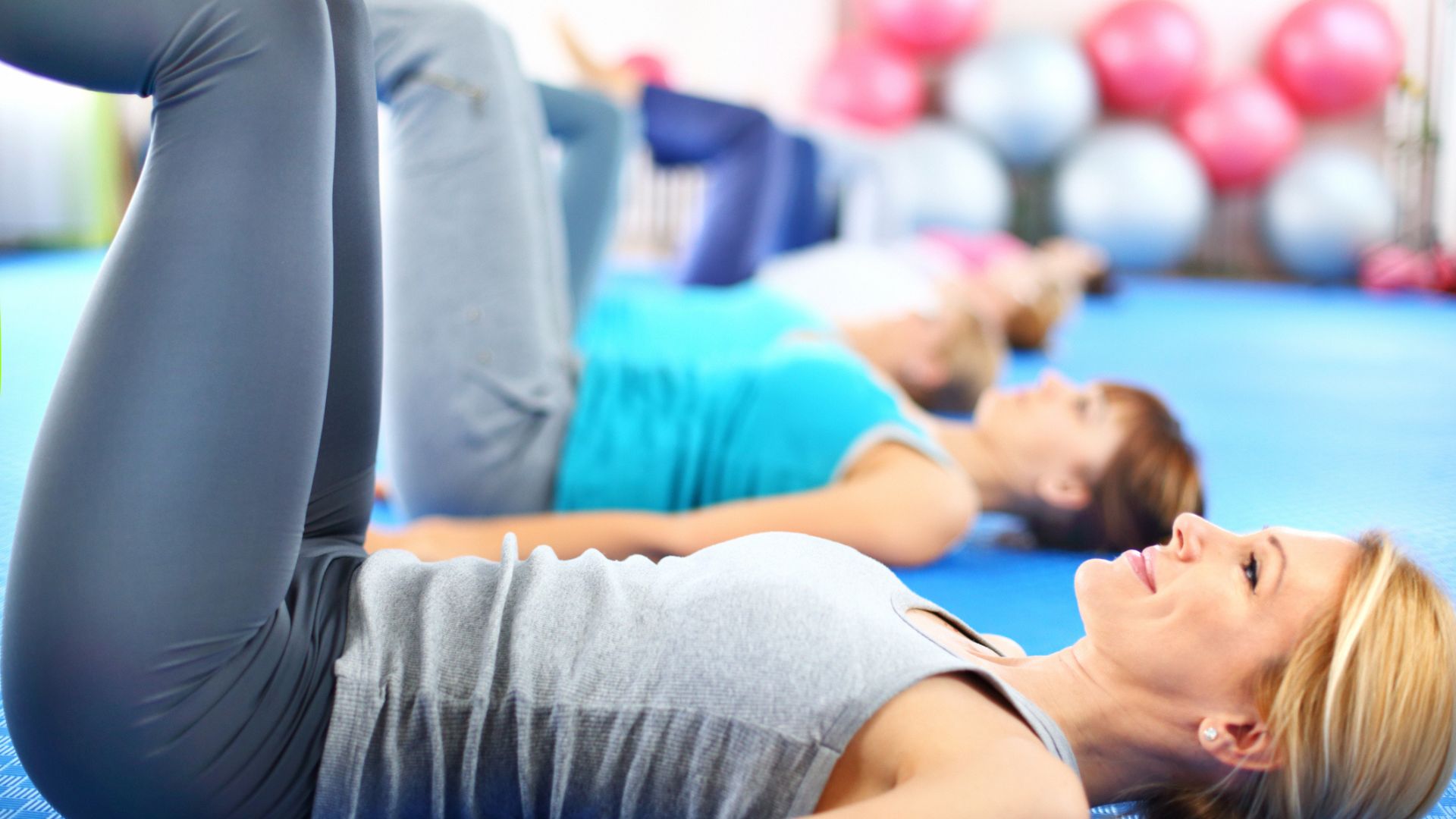 A Pilates instructor says this is the beginner-friendly core exercise everyone should try
A Pilates instructor says this is the beginner-friendly core exercise everyone should tryForget crunches, this is the perfect foundation move
By Alice Porter Published
-
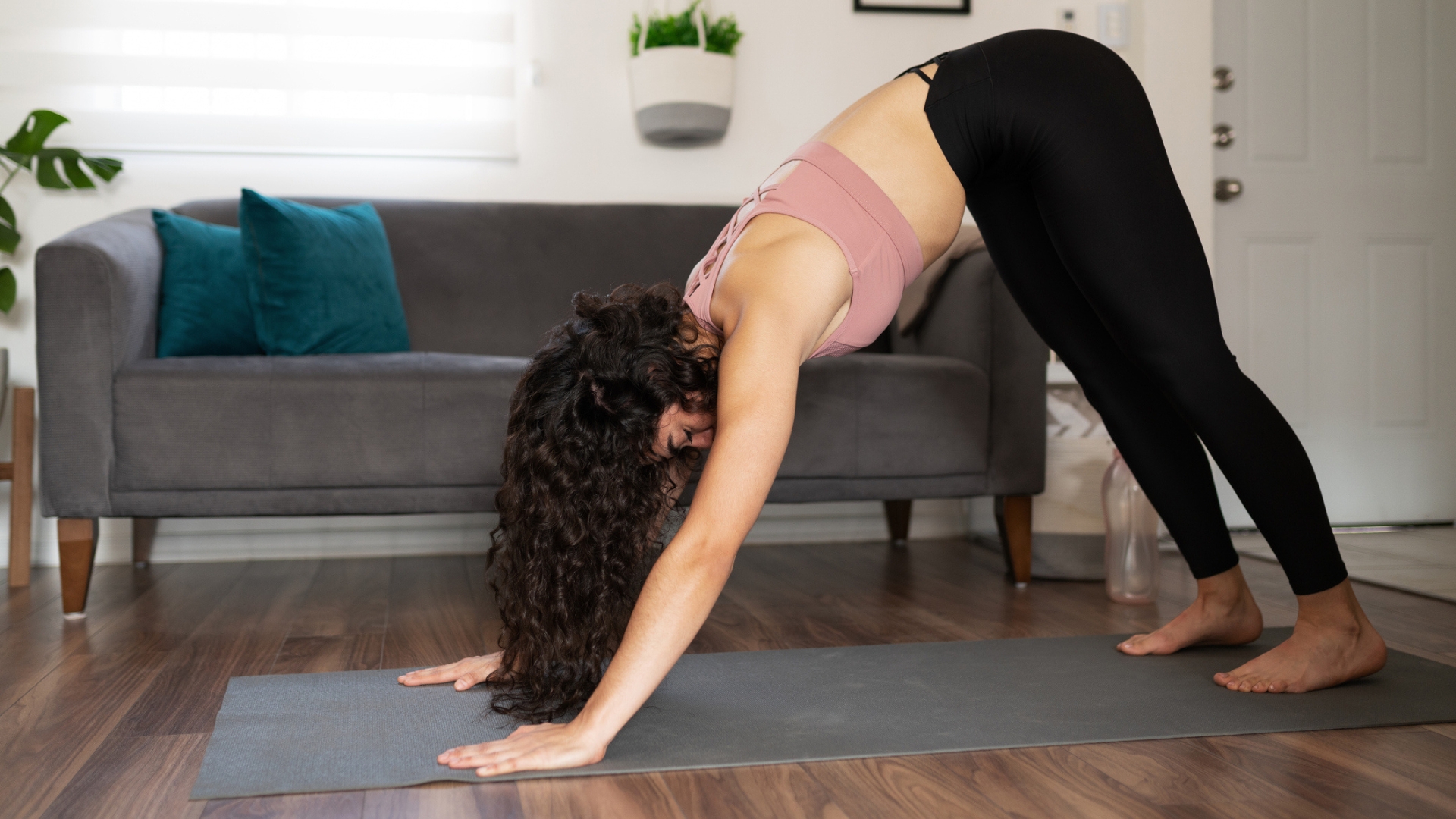 Prevent poor posture and release tension from sitting down with these four simple stretches from a yoga instructor
Prevent poor posture and release tension from sitting down with these four simple stretches from a yoga instructorThe daily poses he swears by, no matter what
By Alice Porter Published
